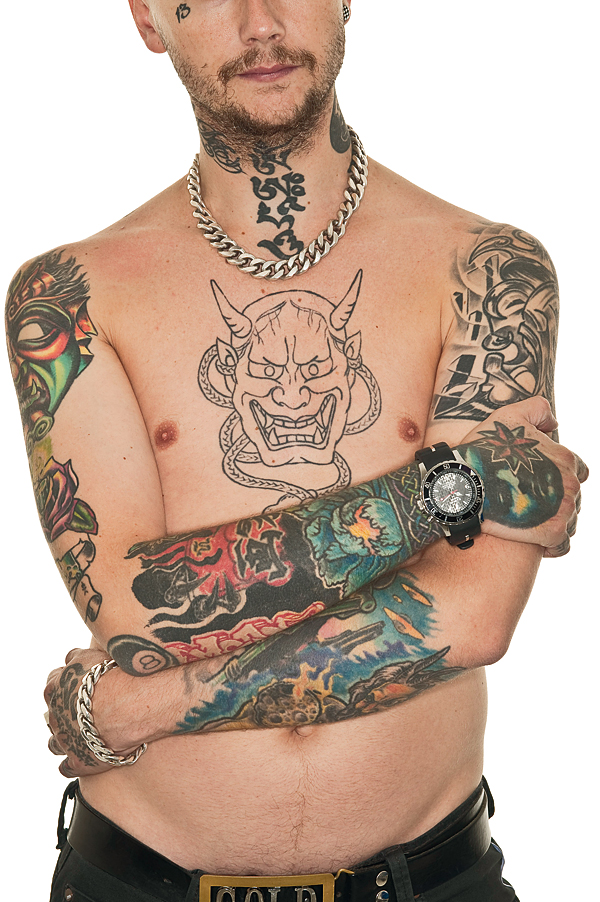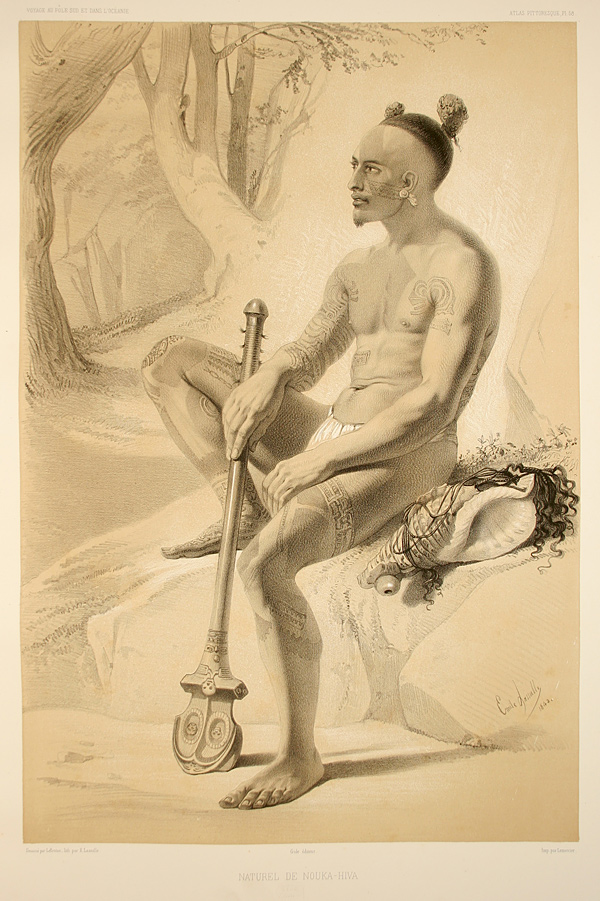
Are tattoos simply a fashion trend? Or, permanently inscribed into the skin, are they a piece of eternity, and thus precisely the opposite of fashion, which is driven by the thirst for change and renewal in permanence? Questions such as this are addressed in the latest issue of "Querformat", a magazine on art and popular culture. Tattoos have, or so we can read there, long since ceased to be symbols of social distinction, serving to identify social outsiders, a medium of stigmatizing the self or others, as used by sailors, criminals, prostitutes or hard rockers. Today, they are accepted in bourgeois society as a form of body art. In fact, for many years they can be encountered anywhere, in bars or on the beach, in the office or the lecture hall, on the train or at exhibition previews. Not least the tattoo on the upper arm of Bettina Wulff, Germany's erstwhile first lady, attested to the fact that they were now socially acceptable. She did not even deem it necessary to cover over the tribal tattoo during state receptions. On returning from their expeditions to the South Seas in the 18th century, Louis Antoine de Bougainville, James Cook and Georg Forster were able to tell endless tales of their sensational finds – exotic animals, plants, peoples and customs. And not least bodies, covered all over with "punctures", and with colored lines. Since then, tattoos have prompted both admiration and disgust in Europe. Even today there are very few people who do not react to them one way or the other. So what is it that prompts 21st-century European urbanites to get a tattoo? The sweet poison of self-enhancement, gained from overcoming pain? The symbolic properties of the images? The importance of what the text says? The prospect of impressively striking fear into others' hearts? Membership of a community of "noble savages" who enjoy erotic joys without taboos? An inclination to favor the culture of protest and antibourgeois stances, such as was so often to be found among the tattoo-craven 19th-century aristocrats, dandies, and artists? London-based photographer Alex MacNaughton decided not to leave the visual culture of tattooing to the sociologists and postcolonial studies specialists. Instead of opting for long-winded explanations, historical decoding and iconographical interpretations, he takes clear and sober stock. His book "London Tattoos", a handy paperback, assigns 4-10 pages to each tattooed person featured. Each starts with a full-body portrait of the person in their everyday clothes, taken in a neutral white cube. Then a page of copy follows, providing their name and age, a brief self-description and a list of which parts of their body bear tattoos. The remaining pages are dedicated to cropped close-up shots of the more or less naked body, emphasizing the individual images. Needless to say, these photographs are a true source of inspiration with their marvelous glory of blossoms, tigers and skulls, resplendent in colors, or in the Sailor Jerry style, the precision of the outlining, etc. Even more impressive is how mutable man is. And that is something MacNaughton's book concept highlights superbly. Because where the Londoners drop their cloths, they likewise shed their roles and functions. What emerges is soft, violable skin that, having become a screen, describes personal preferences and emits personal messages. Thus, Nicola Redford first presents herself as a typical businesswoman in a black suit. She has barely removed her jacket and we already see a pair of swallows in love, cheekily surrounding a red rose and tweaking at the petals. In keeping with Chinese templates, the background is in sky blue, a magnolia branch protruding decoratively into the image. So why did Nicola Redford choose this of all themes? Quite simple: she likes it. By contrast, Alice Temple has a huge skull decorating her back, while her waist sports ornamental signatures by Lucy and Daisy, citing other motives. What was important here was not the theme, but the artist, in her case artist Nicole Low. She gave Low as good as free rein. Unlike Bee Nguyen, who wanted to bear a sign on her body that is as unique as is she and so boasts a skyline to the left of her chest, her travels presented in a few lines: the linear structure brings together Japanese mountains, the Empire State Building, the Eiffel Tower and Big Ben. Hayley Hayes achieves one of the most astonishing metamorphoses. With her brown cardigan, beige shirt and jeans, there's nothing to suggest that she is a professional tattoo artist. Yet when she sheds her clothes, a veritable firework display emerges, blooms encircle her arms like lacey garments, and seen from behind there's not a square inch of her body that does not bear flowers, stars, butterflies, dragonflies and leaves. Why, she asks, should she live with a pallid uninteresting skin when she can decorate it with so many colors and patterns? Photographer Richard Sawdon Smith also proves to be very revealing. Initially very much the tight-upper-lip British gent in a suit, on the pages that follow he presents his innermost joys. Beneath his canary-yellow shirt there's a tattoo that transforms his subcutaneous veins into an image on his skin, thus doubling them by way of illustration. As if in an anatomy atlas we see the arteries and veins, and can even study the myocardial on a "living" object. Richard Sawdon Smith tells readers that since he suffers from an incurable disease that requires regular blood tests, he wanted to make it easier for the doctors or nurses to take his blood. The participants in Alex MacNaughton's project not only share the proverbial British humor, but are all members of or closely associated with London's creative scene. All of them, be they artists, art collectors, art historians, musicians, graphic designers or writers, celebrate artistic creativity as an indicator of defiant individuality. With their tattoos they express their wishes and dreams, their playful sense of fun, their joy in a surfeit of sensory stimuli. In this way, the tattoo becomes a guarantee of libertarian self-determination. And a hallmark. Because there is no doubt there is nobody among them who does not know that he is about to carry his skin to market. London Tattoos
by Alex MacNaughton
Paperback, 304 pages, English
Prestel, Munich, 2011
EUR 19.95
www.prestel.com





















